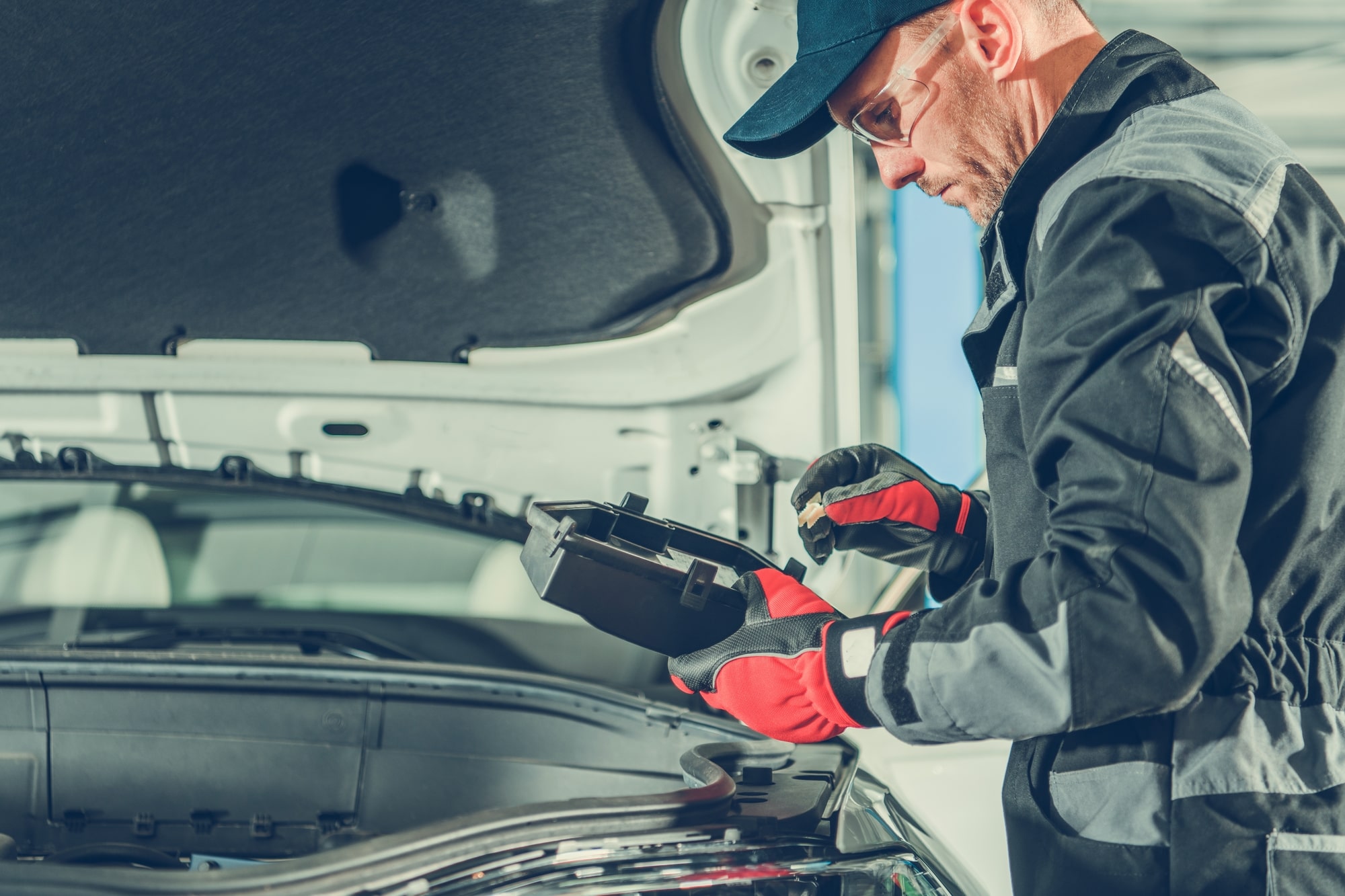Whether you’re buying a new or a used car, part of the deal is you also take on a level of risk. The risk? Beyond road accidents, car ownership’s principal risk is the potential cost of maintenance and unexpected repairs. Sadly, you can’t expect to eliminate these risks—all cars can suffer problems with mechanical or electrical parts. However, what you can do is to try to minimize them.
You have lots of options—buy new and select a reliable make, buy used and go for the best model by inspecting it, adding an extended warranty, or purchasing a Certified Pre-Owned (CPO) car.
But what is a Certified Pre-Owned car? Does it mean your car will be more reliable? Will buying one save you money on repairs? Read on to find out everything you need to know about them and whether they’re a better option.
What is a Certified Pre-Owned Car: An Overview
A Certified Pre-Owned car has been inspected and deemed to meet certain criteria as an indication of their condition and reliability.
They essentially offer the same benefits as used cars: they’re cheaper, and you can potentially afford a model that would be outside your budget if you were buying new. But there’s an added advantage: CPO cars are meant to have a reduced risk of something going wrong. These cars have passed an inspection and usually come with extended warranty coverage and maintenance plan assistance.
What Are the Different Kinds of Certification?
Pre-owned cars can be certified by a:
- Manufacturer
- Dealership
- Independent organization
Each certifier has its eligibility and inspection criteria for certifying cars. Manufacturer-certified pre-owned vehicles are between 3 and 6 years old, with up to 80,000 miles, although the parameters differ depending on the manufacturer. The car is then inspected against a multipoint checklist.
For example, for its CPO program, Kia selects cars less than 5 years old and under 60,000 miles and puts them through a 164-point inspection. Buick’s CPO program’s Eligible cars need to be no older than 6 years and have clocked up 75,000 miles or fewer. Buick’s inspection runs to 172 points.
Third-party programs, meanwhile, tend to cover a wider pool of cars, but their inspections are usually less exhaustive.
Manufacturer-certified cars, often only available in authorized dealerships, are considered to have ‘genuine’ CPO status, meaning they’ve been inspected according to the maker’s standards.
Some dealerships also apply for their dealer-certified status, but it’s important to bear in mind their list of criteria is often less stringent than the manufacturers.
Some independent certification programs, such as the NVCP (National Vehicle Certification Program), have their criteria for certifying vehicles.
Buyers must assess whether the higher price reflects good value for the certification level and peace of mind it provides.

List of Top Extended Car Warranty Companies of 2022!
Has Your Car Warranty Expired? Extend it Today!
Check out our top picks for extended car warranty programs.
View the ListWhat Is the Warranty on a Certified Pre-Owned Car?
By inspecting and reconditioning cars that meet their eligibility criteria, manufacturers can offer a cheaper alternative to buying new that can be more attractive than buying used.
Manufacturers offer warranties as part of their CPO programs, but each differs, so it’s important to read the small print. The general principle is that the newer the model, the more extended and more comprehensive the warranty.
Let’s have a look at the CPO warranties offered by some of the most popular car manufacturers (based on national sales, according to Edmunds):
Ford
All Ford CPO vehicles come with “a comprehensive limited warranty backed by Ford Motor Company covering more than 1,000 components for 12 months/12,000 miles plus 7-year/100,000-mile powertrain limited warranty coverage.”
Chevrolet
a Scheduled Maintenance Program and two factory-backed warranties: a new, longer 6-Year/100,000-Mile Powertrain Limited Warranty (whichever comes first, from original in-service date) that includes Roadside Assistance, and a 12-Month/12,000-Mile Bumper-to-Bumper Limited Warranty.
a Scheduled Maintenance Program and two factory-backed warranties: a new, longer 6-Year/100,000-Mile Powertrain Limited Warranty (whichever comes first, from original in-service date) that includes Roadside Assistance, and a 12-Month/12,000-Mile Bumper-to-Bumper Limited Warranty.
a Scheduled Maintenance Program and two factory-backed warranties: a new, longer 6-Year/100,000-Mile Powertrain Limited Warranty (whichever comes first, from original in-service date) that includes Roadside Assistance, and a 12-Month/12,000-Mile Bumper-to-Bumper Limited Warranty.
Chevrolet CPO vehicles come with “a Scheduled Maintenance Program and two factory-backed warranties: a new, longer 6-Year/100,000-Mile Powertrain Limited Warranty (whichever comes first, from original in-service date) that includes Roadside Assistance, and a 12-Month/12,000-Mile Bumper-to-Bumper Limited Warranty.”
Ram
According to CarBibles, for Ram CPO vehicles, the duration of “bumper-to-bumper coverage is 3 months or 3,000 miles, whereas the duration of powertrain coverage is 7 years or 100,000 miles.”
They say: “Additionally, the warranty includes 24-hour roadside assistance. You will also have towing service, which includes flat tire service, battery-jump assistance, police service, lockout service, gas delivery, ambulance service, and roadside coverage, in case you need the services for an accident. The warranty also includes car rental coverage to compensate for the inconvenience caused.”
In summary, warranty coverage and additional benefits such as maintenance and roadside assistance are usually included when you buy a CPO car, but it’s always important to check the terms of a warranty before signing.
Options for Buying: New vs Used vs CPO
The best option for you really depends where your priorities lie. You can choose to buy new, used or CPO, and they each have their pros and cons.
Buy New
Pros
- You get the latest model and technology.
- It’s the surest way to know the car is in perfect order.
- The manufacturer guarantees reliability through its own warranty, so even if there’s a rare problem, it’s easily fixed.
Cons
- It’s by far the most expensive option, and if you’re budget isn’t limitless, you’ll probably find, by buying used, you can get a car with a higher specification for less if you’re willing to live with a greater degree of uncertainty.
Buy Used
Pros
- They’re cheaper. By buying a used car, you can save a lot of money and you won’t take the hit on its initial depreciation.
- If you want added security, you’ll need to purchase an add-on extended warranty.
Cons
- The savings could be offset by maintenance and repair costs over the course of owning the vehicle.
- There’s often uncertainty about how the car has been maintained and if it has any problems.
- You also need to shop around for an extended warranty. Read more about the different ways you can protect your vehicle.
Buy CPO used
Pros
- You can often get better financing terms on CPO cars.
- You get most of the benefits of buying a used car, but also added peace of mind.
- They often come with added bonuses such as extended warranty included, plus 24-hour roadside assistance, rental car provision, maintenance plans, and more.
Cons
- Not all CPO programs are equal.
- You can still have problems and they aren’t as good as new.
- You can often get a better deal buying used and adding an extended warranty.
Is It Worth Buying a CPO Car?
CPO cars suit lots of people. If your budget can stretch a bit further, you’d like more recent technology, and you don’t have time to hunt around for a decent used car yourself, they might be right for you.
If you’re looking to save money and you’re able to spend a little time on it, though, our view is you can up with a similar level of security for less—a view shared by Consumer Reports. With a CPO program, you can end up paying a premium that you don’t see much extra benefit from. Putting in the extra time and finding a vehicle yourself, then getting a suitable extended warranty (also known as a vehicle service contract), can be a better option overall.
Your CPO Checklist
- Check who the CPO program is with. Is it the manufacturer, in which case it will be backed by a manufacturer warranty? ‘Certified’ isn’t the same as CPO.
- Check the inspection record. Ask to see it and see which parts, if any, were replaced or refurbished.
- Check the added extras. What else is included in the CPO price? What does the extended warranty cover and over what period?
- Check the car. If the dealership carried out the inspection for the CPO, it may not have caught or included everything so it’s always worth doublechecking. The Federal Trade Commission recommends asking for an independent inspection of any used car you’re thinking about buying.
- Check your expectations. It may have been thoroughly checked, but it isn’t a new a car and it can still have problems.
- Check your options. If you’re not convinced and you have the time to look around, you could find a better deal by going for a non-CPO used car, checking for recalls and the vehicle history, and then choosing the right extended warranty.
You can check out our extended warranty buyer guide to find out what to consider and read our own reviews of the main providers here. Or you can learn all the basics in our starter guide.



